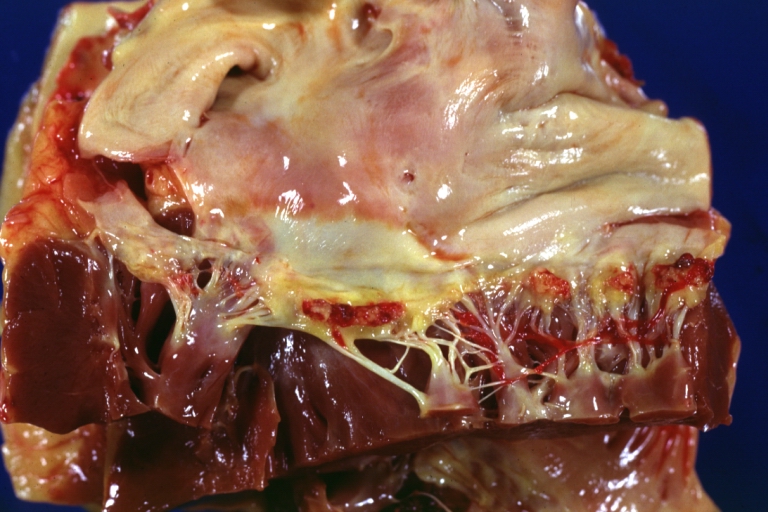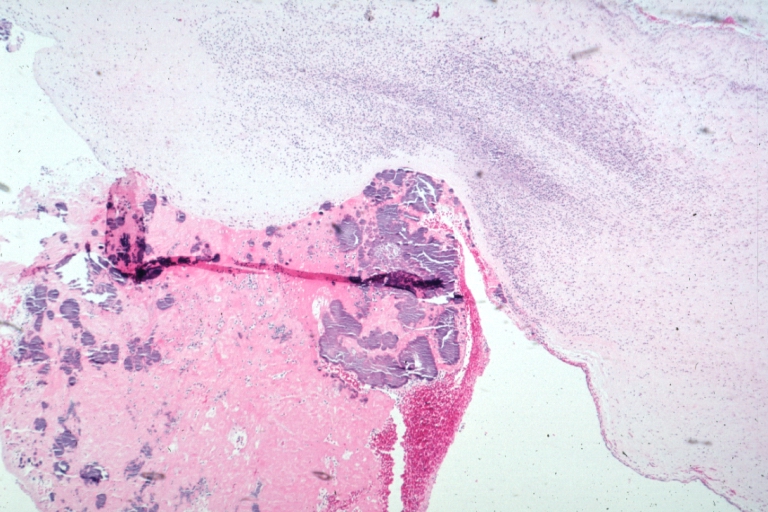Endocarditis pathophysiology: Difference between revisions
No edit summary |
No edit summary |
||
| Line 11: | Line 11: | ||
===Pathogenesis=== | ===Pathogenesis=== | ||
Since the valves of the heart do not receive any dedicated blood supply, defensive immune mechanisms (such as [[white blood cell]]s) cannot directly reach the valves via the bloodstream.<ref name=endo> Endocarditis. Wikipedia (2015). URL= https://en.wikipedia.org/wiki/Endocarditis Accessed on September 21, 2015</ref> If an organism (such as [[bacteria]]) attaches to a valve surface and forms a vegetation, the host immune response is blunted.<ref name=endo> Endocarditis. Wikipedia (2015). URL= https://en.wikipedia.org/wiki/Endocarditis Accessed on September 21, 2015</ref> The lack of blood supply to the valves also has implications on treatment, since drugs also have difficulty reaching the infected valve. <ref name=endo> Endocarditis. Wikipedia (2015). URL= https://en.wikipedia.org/wiki/Endocarditis Accessed on September 21, 2015</ref> Normally, blood flows smoothly past these valves.<ref name=endo> Endocarditis. Wikipedia (2015). URL= https://en.wikipedia.org/wiki/Endocarditis Accessed on September 21, 2015</ref> If they have been damaged the risk of bacteria attachment is increased.<ref name=endo> Endocarditis. Wikipedia (2015). URL= https://en.wikipedia.org/wiki/Endocarditis Accessed on September 21, 2015</ref> | |||
===Associated Conditions=== | ===Associated Conditions=== | ||
| Line 17: | Line 18: | ||
==Causes of Bacteremia== | ==Causes of Bacteremia== | ||
Revision as of 16:05, 21 September 2015
|
Endocarditis Microchapters |
|
Diagnosis |
|---|
|
Treatment |
|
2014 AHA/ACC Guideline for the Management of Patients With Valvular Heart Disease |
|
Case Studies |
|
Endocarditis pathophysiology On the Web |
|
Risk calculators and risk factors for Endocarditis pathophysiology |
Editor-In-Chief: C. Michael Gibson, M.S., M.D. [1]
Overview
The turbulent blood flow around the heart valves is a risk factor for the development of endocarditis. The valves may be damaged congenitally, from surgery, by auto-immune mechanisms, or simply as a consequence of old age. The damaged endothelium of these areas becomes a site for attachment of infectious agents in infectious endocarditis. Dental procedures, colorectal cancer, urinary tract infections and intravenous drug use are the most common routes of introducing the infectious agent into the bloodstream. The three most common pathogens are strepotococcus viridans, staphylococcus and enterococcus. In non-bacterial thrombotic endocarditis (NBTE), the damaged part of a heart valve becomes covered with a blood clot which organizes.
Pathophysiology
Pathogenesis
Since the valves of the heart do not receive any dedicated blood supply, defensive immune mechanisms (such as white blood cells) cannot directly reach the valves via the bloodstream.[1] If an organism (such as bacteria) attaches to a valve surface and forms a vegetation, the host immune response is blunted.[1] The lack of blood supply to the valves also has implications on treatment, since drugs also have difficulty reaching the infected valve. [1] Normally, blood flows smoothly past these valves.[1] If they have been damaged the risk of bacteria attachment is increased.[1]
Associated Conditions
Gross Pathology
Microscopic Pathology
Causes of Bacteremia
Dental Procedures
The bacteremia is often caused by dental procedures, such as a cleaning or extraction of a tooth. It is important that a dentist or a dental hygienist therefore be told of any heart problems before beginning the procedure. Prophylactic antibiotics are administered to patients with certain heart conditions as a precaution.
Entrance of Bacteria Into the Bloodstream
Another cause of infective endocarditis is a scenario in which an excess number of bacteria enter the bloodstream. Colorectal cancer, serious urinary tract infections, and IV drug use can all introduce large numbers of such bacteria. When a large burden of bacteria are introduced, a normal heart valve may be infected. A more virulent organism (such as Staphylococcus aureus, but see below for others) is often responsible for infecting a normal valve.
Intravenous Drug Use
Infections of the tricuspid valve and less frequently the pulmonic valve tend to occur in intravenous drug users given the high pathogen burden from their introduction in the vein. The diseased valve is most commonly affected when there is a pre-existing disease. In rheumatic heart disease this is the aortic valve and the mitral valves, on the left side of the heart.
Pathology
-
Heart; Breast intraductal papilloma metastasis. Thrombotic Nonbacterial Endocarditis (Infected): Gross mitral valve natural color vegetations well illustrated these were secondarily infected with staphylococcus case of 8 year survival breast intraductal papillary adenocarcinoma with extensive metastases. Aortic valve also involved
-
Thrombotic Nonbacterial Endocarditis Infected: Micro low mag H&E fibrin vegetation with masses of staphylococci and inflammatory cells in valve secondarily infected case 8 year survival breast papillary intraductal adenocarcinoma with extensive metastases gross is aortic valve lesions.

